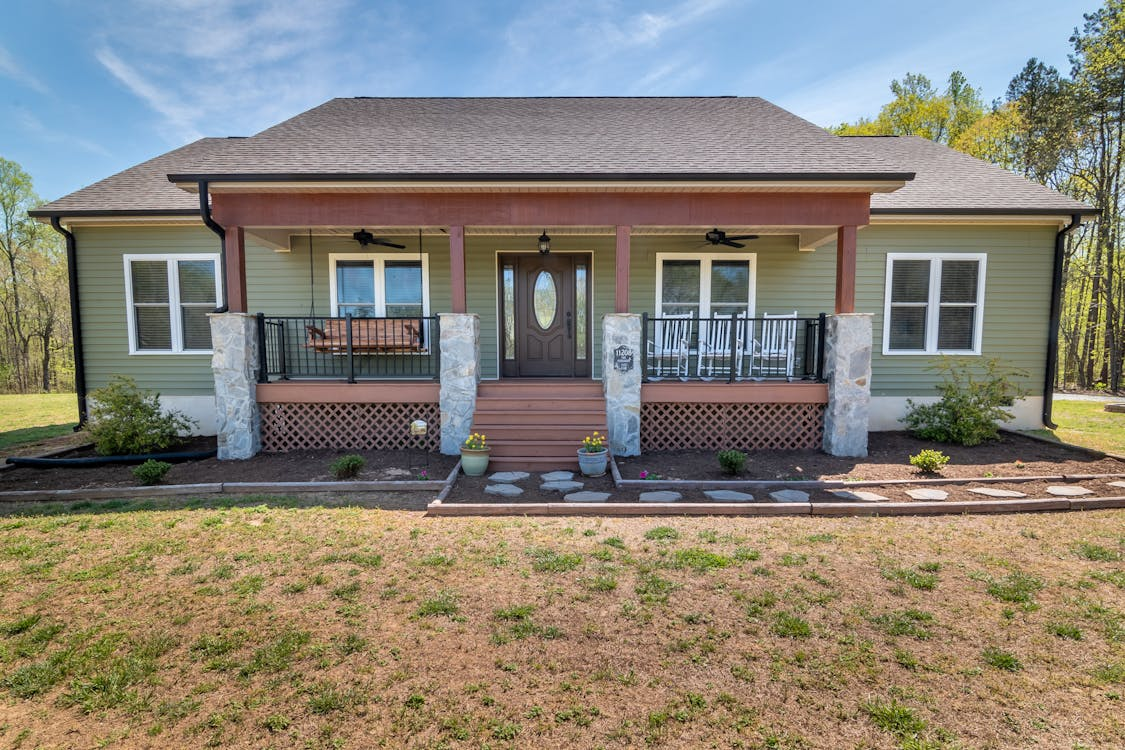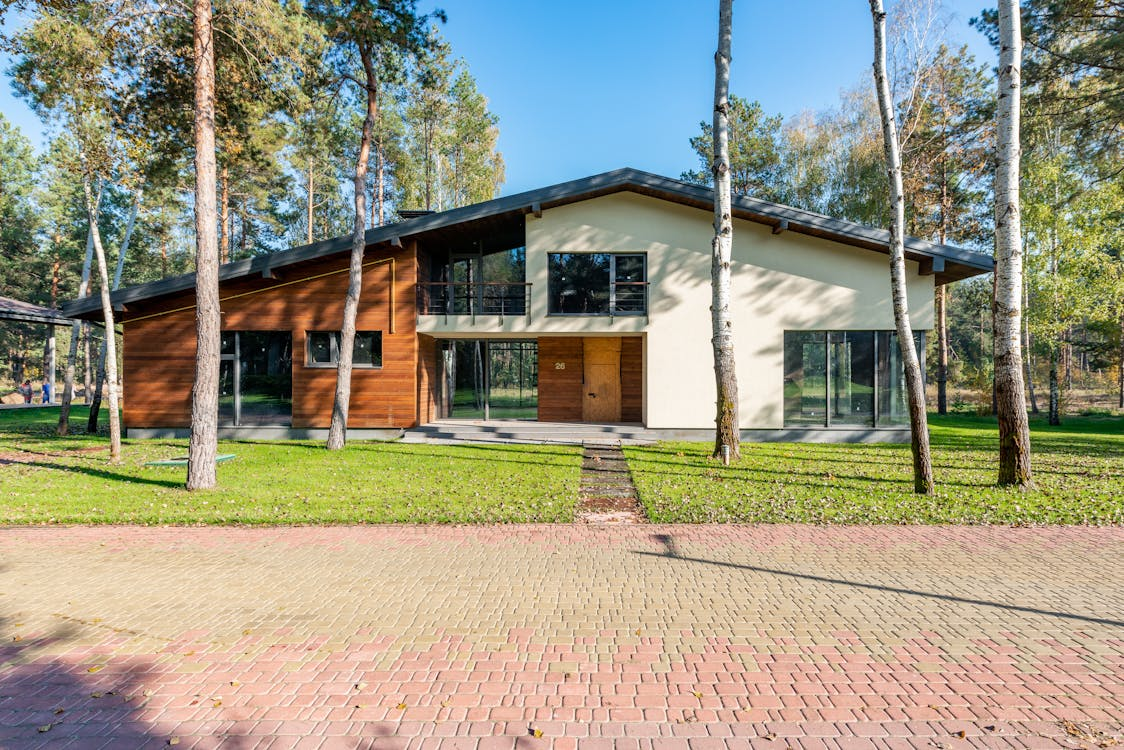Non-QM Loans: Your Path to Flexible Financing


What is a Non-QM Loan?
Purchasing a home is a massive expense. Depending on your market, homes may cost hundreds of thousands of dollars, even on the lower end of the pricing spectrum. Most homebuyers cannot afford those numbers, so they seek out mortgage lenders to borrow that money and pay it back over an extended period. The most popular home loan products are conventional mortgages. However, many borrowers cannot meet these lenders' criteria for credit scores, income, debt-to-income ratios, and other metrics.
Fortunately, there are alternative loans called non-qualified mortgages. Non-QM loans fall outside the standards of the Consumer Financial Protection Bureau and other government agencies. Borrowers generally aim for traditional home loans to keep long-term costs down, but this isn’t an option for everyone. A non-qualified mortgage lowers the barrier to entry with flexible terms so more borrowers can access homeownership.
If you opt for a non-qualified mortgage over a traditional mortgage, there is a trade-off. The upfront and ongoing expenses typically increase, so you pay for extra flexibility.
How to Qualify for a Non-Qualified Mortgage
To apply for non-qualified mortgages, you must understand the eligibility criteria. Although qualification is more flexible for non-qualified mortgage loans, standards must still be met. You should meet a few requirements to qualify for most non-QM mortgage loans.
First, you may have limited options with a low credit score. Non-QM loans typically make it easier if you have a short credit history or a higher debt-to-income ratio. However, lenders will be flexible with some loan terms if you can prove you are strong financially. For example, if you have acquired many assets but your credit score is too low for conventional mortgages, you could still obtain a specific type of non-QM loan.
Next, you will likely face higher down payment requirements for a non-qualified loan. Since the lender faces elevated risk, they must alleviate that risk somehow, and requiring more money upfront is their solution. While a 20% down payment is typically the recommended amount for a mortgage loan term, that number is probably the minimum requirement for a non-QM mortgage.
Another qualification metric could be your debt-to-income ratio. Lenders often look at a borrower’s income compared to their total debt obligations. To calculate your DTI ratio, divide your total monthly debts by your monthly income, then multiply it by 100. Lenders will have different requirements, but many non-QM lenders will accept DTIs up to 55% if you have enough money for a sizable down payment and a strong credit score. Remember that lenders verify income using different methods for non-QM loans, so be prepared to provide bank statements and other documentation to verify DTI.

Benefits of Non-QM Loans
Real estate entities like Fannie Mae and Freddie Mac often purchase conventional loans in the secondary mortgage market. Riskier mortgages are less likely to be bought by these organizations, and most non-QM loans fall into this category. Though some disadvantages are associated with non-QM mortgages, there are enough benefits to make them worth it for the right borrowers. Primarily, non-QM loan borrowers enjoy more flexible qualifying criteria, accommodations for self-employment, and unique financing options.
Flexible Qualification Criteria
Those who turn to non-QM mortgage lenders often do so for the flexible qualifications. For example, conventional loans typically require credit scores of 620 or greater to qualify. They will also require consistent income to ensure the borrower can afford the monthly payment. A non-qualified mortgage may have looser requirements for the credit score and consistent income.
For example, a conventional lender may be uncomfortable giving you money if you get income from multiple sources that are hard to predict. A lower credit score may automatically disqualify you from a loan, even if the score is low due to a short credit history. Non-QM loans consider these circumstances and are more flexible.
Options for Self-Employed Borrowers
If you apply for a traditional mortgage, income verification is part of the underwriting process. The lender will look at pay stubs or W-2s to verify that you make enough money to cover your mortgage payment. However, self-employed borrowers rarely have these documents to verify their income. Instead, you may only have bank statements available to demonstrate your income.
By applying for non-QM loans, the lender will not disqualify you for not having W-2s or consistent pay stubs. Instead, they will look at alternative income verification documents, such as bank statements or tax returns, to evaluate your eligibility.
Types of Non-QM Loans
Flexibility is present in the qualification criteria for non-QM loans and the types of loans you can acquire. Traditional home loan products tend to fit into certain boxes and are predictable. Since non-QM loans rely on the borrower’s ability to meet these flexible standards, there are various options for structuring the loan terms.
Interest-Only Loans
One type of non-qualified mortgage is an interest-only loan. If you take out this mortgage, the lender will let you make interest-only payments for a certain period. That means no principal balance payments are made during the interest-only period. Once the interest-only period ends, you will start making payments toward the interest rates and principal loan balance, or you can make balloon payments.
This model works well for borrowers who need lower monthly payments early on. Self-employed individuals, high-net-worth borrowers, and real estate investors could all benefit from making interest-only payments on their non-QM loans.
Stated Income Loans
Stated income involves a lot of trust from lenders. For both traditional and non-qualified mortgages, lenders will typically verify income in some way, either through pay stubs, bank statements, W-2s, or tax returns. With a stated income loan, the borrower states their estimated income on the application form, and the lender takes them at their word.
Stated income mortgages are best for self-employed individuals and real estate investors. Those with investment properties can benefit from this program since their income may change from different sources. The investor may seek a new financing strategy besides a debt-service coverage ratio loan. The trade-off for this level of risk is a higher minimum credit score and down payment.
Jumbo Non-QM Loans
Jumbo non-QM loans are the same as average non-QM loans but with much higher limits. Since non-QM loans are already considered risky for lenders, they tend to be used by borrowers with inconsistent income or lower credit scores. However, borrowers with high net worth or multiple income streams can use jumbo non-QM loans to make more significant purchases.
A jumbo, non-qualified mortgage is an excellent option for someone purchasing a luxury property. If you are self-employed or own multiple investment properties, this loan product may be ideal.

Non-QM Loan vs. Traditional Mortgage
There are many differences between non-QM loans and traditional loans. First, non-QM products fall outside the limits of the Consumer Financial Protection Bureau, so they are riskier for lenders to offer. Conventional loans also have stricter requirements for credit scores, DTI ratios, and income. A non-qualified mortgage is more flexible for borrowers, so they can still access property ownership even with a poor credit score or high DTI.
The other difference between these two loan categories is the long-term cost. A non-qualified mortgage is riskier, so the lender is more likely to charge more throughout the loan. This can be done through higher down payments, interest rates, or upfront fees.
Interest Rates
The average interest rate is one of the most significant differences between these loans. Interest is charged on a loan and is the cost of borrowing a particular loan balance. If you need a loan of $200,000, the interest rate affects how much you pay over the loan term to borrow that $200,000. Non-QM lenders will likely charge increased interest rates due to the elevated risk they face from borrowers. This increases the long-term cost of your loan, even if you choose an interest-only payment plan for the first few years.
Your credit score will also affect the interest rate you qualify for on the loan. Even if you would typically pay a higher rate to access the flexibility of the non-QM loan, a strong credit score could make the rate more affordable since you have a history of paying back debt.
Is a Non-QM Loan Right for You?
A non-QM loan offers a unique pathway to financing your home. Although the costs can be more significant, some borrowers cannot qualify for traditional home loan products, and non-QM loans are their only choices. Here are several considerations to take into account:
- Do you have inconsistent cash flow that could make traditional lenders pause?
- Is your credit score too low to qualify for most conventional or FHA loans?
- Are you self-employed and can only prove income with alternative income documentation?
- Do you need lower initial payments on your loan?
If any of these elements are true, then a non-QM loan may be your best option for home financing.

How TrueWay Mortgage Can Help?
TrueWay Mortgage is here to guide you through the mortgage loan process. Whether you qualify for traditional products or require non-qualified mortgages, our team has the expertise to find the right financing solution for your home.
As a family business, we understand the value of providing personalized service to each client. Rather than cram you into a cookie-cutter approach, we will look at your individual needs, evaluate your best options, and walk you through applying for a non-QM loan with a competitive interest rate.
Costs Considerations
It is always important to weigh the costs of different loan options. Many factors affect the total cost of a loan, such as mortgage insurance, closing costs, prorated property taxes, appraisal fees, homeowners insurance, down payments, and market conditions.
Using an ARM to purchase a home will subject you to specific cost considerations. You must be aware of the corresponding financial index and how the market is behaving since it will affect your interest rates. You should also know the capped rate when the intervals approach. If you plan to refinance, this will also involve closing costs and changing monthly payments.
TrueWay Mortgage will communicate with you openly and honestly to ensure your loan is affordable with these financial considerations.
Getting Started with Your Non-QM Loan Application
Ready to start applying for a non-QM loan with TrueWay Mortgage? We have several simple tools you can use to get started. First, the purchase assistant will guide you through simple questions to determine your home financing needs. You can also plug some quick numbers into our mortgage calculator to look at potential monthly payments. Lastly, if you are ready to apply for your mortgage loan, you can create your account and complete the online process.
Let’s work together to find your dream home with a financing solution that works.


